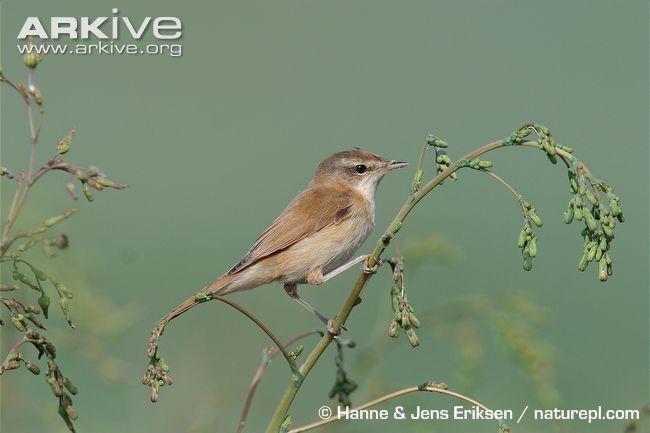| Citation |
|
Description |
Geographic Range [top]
Countries occurrence:
Native:
Afghanistan; Armenia; Bangladesh; Bulgaria; China; India; Iran, Islamic Republic of; Kazakhstan; Kyrgyzstan; Lao Peoples Democratic Republic; Mongolia; Myanmar; Nepal; Pakistan; Romania; Russian Federation (Central Asian Russia, Eastern Asian Russia, European Russia); Tajikistan; Thailand; Turkey; Turkmenistan; Ukraine; Uzbekistan
Vagrant:
Austria; Bahrain; Belgium; Denmark; Estonia; Faroe Islands; Finland; France; Germany; Greece; Hong Kong; Hungary; Ireland; Israel; Italy; Latvia; Macedonia, the former Yugoslav Republic of; Malta; Netherlands; Norway; Oman; Poland; Portugal; Slovenia; Sweden; United Arab Emirates; United Kingdom
Additional data:
? Continuing decline in area of occupancy (AOO): Unknown
? Extreme fluctuations in area of occupancy (AOO): No ? Estimated extent of occurrence (EOO) - km2: 6530000
? Continuing decline in extent of occurrence (EOO): Unknown ? Extreme fluctuations in extent of occurrence (EOO): No
? Continuing decline in number of locations: Unknown
? Extreme fluctuations in the number of locations: No
Range Map: Click here to open the map viewer and explore range.
Population [top]
Population: The global population size has not been quantified. In Europe, the breeding population is estimated to number 200,000-396,000 pairs, which equates to 400,000-792,000 mature individuals (BirdLife International 2015), but Europe forms <10% of the global range.
Trend Justification: The population is suspected to be in decline owing to ongoing habitat destruction. The small European population is estimated to be increasing (BirdLife International 2015).
Current Population Trend: Decreasing
Additional data:
? Continuing decline of mature individuals: Unknown
? Extreme fluctuations: No ? Population severely fragmented: No
? Continuing decline in subpopulations: Unknown
? Extreme fluctuations in subpopulations: No ? All individuals in one subpopulation: No
Habitat and Ecology [top]
Habitat and Ecology: This species breeds in reeds (Phragmites), chiefly low-growing and open, as well as reedmace (Typha) and neighbouring bushes or tamarisks (Tamarix), often on the landward edges of lakes and in river valleys. Around the Black Sea, breeding begins in mid-May. Three to six eggs are laid in a cylindrical, rather tall and deep nest, which is loosely constructed from reed and grass stems and leaves and reed inflorescences, woven around vertical stems of water plants and lined with finer grasses, reed flowers and occasionally plant down. It is suspended over land or water, 10–200 cm up among vertical stems of emergent aquatic or semi-aquatic vegetation (Dyrcz 2006). It feeds mainly on insects (Snow and Perrins 1998) but also takes spiders (Araneae) and earthworms (Dyrcz 2006). The species is migratory, wintering in the Indian subcontinent (Snow and Perrins 1998).
Systems: Terrestrial; Freshwater
Continuing decline in area, extent and/or quality of habitat: Unknown
Generation Length (years): 4.4
Movement patterns: Full Migrant
Threats [top]
Major Threat(s): In Bulgaria this species has been adversely affected by large-scale reed-cutting and burning (Hagemeijer and Blair 1997). Large-scale marsh reclamation may pose a threat (Dyrcz 2006).
Conservation Actions [top]
Conservation Actions: Conservation Actions Underway
CMS Appendix II. Bern Convention Appendix II. There are currently no known conservation measures for this species within Europe.
Conservation Actions Proposed
Important areas of habitat should be protected and maintained from habitat alteration and disturbance.
Amended [top]
Amended reason: Map revised.
Citation: BirdLife International. 2017. Acrocephalus agricola (amended version of 2016 assessment). The IUCN Red List of Threatened Species 2017: e.T22714714A111077678. http://dx.doi.org/10.2305/IUCN.UK.2017-1.RLTS.T22714714A111077678.en. Downloaded on 11 September 2018.
Disclaimer: To make use of this information, please check the .
Feedback: If you see any errors or have any questions or suggestions on what is shown on this page, please provide us with feedback so that we can correct or extend the information provided
|

